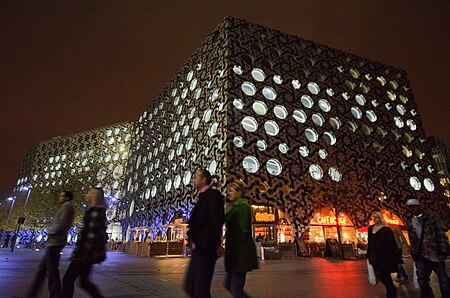Ravensbourne University London

Ravensbourne University London (formerly Ravensbourne College of Design and Communication) is a digital media and design university, with vocational courses in fashion, television and broadcasting, interactive product design, architecture and environment design, graphic design, animation, moving image, music production for media and sound design. Ravensbourne was established in 1962 by the amalgamation of Bromley School of Art, Sidcup School of Art and Beckenham School of Art. It was originally at Bromley Common and later at Chislehurst and on the Greenwich Peninsula in Inner London, where it opened a new campus in autumn 2010. The college is named after the River Ravensbourne, which flows from Bromley Common to Greenwich.
Excerpt from the Wikipedia article Ravensbourne University London (License: CC BY-SA 3.0, Authors, Images).Ravensbourne University London
Penrose Way, London Greenwich Peninsula (Royal Borough of Greenwich)
Geographical coordinates (GPS) Address Website External links Nearby Places Show on map
Geographical coordinates (GPS)
| Latitude | Longitude |
|---|---|
| N 51.501666666667 ° | E 0.0055555555555556 ° |
Address
Ravensbourne University London (Ravensbourne College)
Penrose Way 6
SE10 0EW London, Greenwich Peninsula (Royal Borough of Greenwich)
England, United Kingdom
Open on Google Maps











